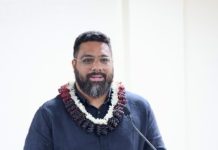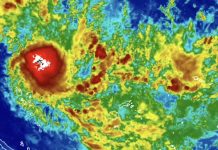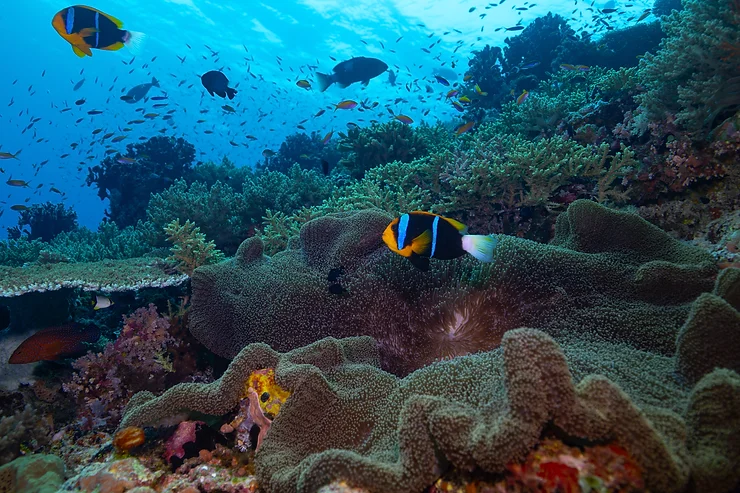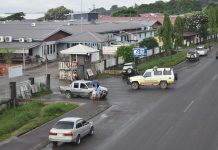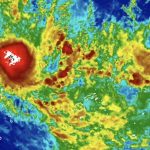A groundbreaking study conducted by Dynamic Planet and National Geographic Pristine Seas has revealed that to meet the global target of protecting 30 percent of the ocean by 2030, the world must create 85 new marine protected areas (MPAs) each day.
This ambitious 30×30 goal, set during the United Nations Convention on Biological Diversity Conference (COP15) in December 2022, has become a critical milestone for countries around the world, including those in the Pacific region, where the ocean plays a central role in sustaining life and livelihoods.
The findings underscore a significant gap between current efforts and the steps needed to meet the target.
Globally, only about 8 percent of the oceans are currently protected, with just 3 percent of these areas offering high levels of protection. The study calls for the creation of approximately 190,000 small MPAs in coastal areas, including those across the Pacific Islands, and 300 large MPAs in remote offshore regions worldwide to achieve the 2030 target.
Kristin Rechberger, CEO of Dynamic Planet and lead author of the study, highlighted the urgency of the situation, stressing the dire need for accelerated action, especially in regions like the Pacific, where the ocean’s health is directly tied to the well-being of local communities.
“We know how to restore the ocean’s incredible power to fuel life on earth, but time is running out,” she said. “To protect people and the planet from the worst impacts of climate change, biodiversity loss and rising food insecurity, 85 MPAs would need to be created daily over six years starting in 2025.”
For the Pacific Islands, which rely heavily on marine resources for food security, tourism and cultural identity, the findings serve as a stark reminder of the work still ahead.
With only six years left until the 2030 deadline, the study’s timing aligns with the UN’s biodiversity conference, COP16, which runs from 21 October to 01 November
Juan Mayorga, a marine data scientist at National Geographic Pristine Seas and co-author of the study, acknowledged the complexity of the challenge, noting that the number of MPAs needed depends on size and protection standards, but the overall scale is immense.
“Our analysis, which covers over 13,000 MPAs worldwide, quickly revealed how far behind the world really is,” Mayorga said.
The Pacific region, including key areas such as the Coral Triangle and the exclusive economic zones of Pacific island nations, will play a pivotal role in global conservation efforts. According to the study, many of the new MPAs are needed in East Asia, the Pacific, Europe and southern Asia. For island nations, the stakes are particularly high, as ocean health is intrinsically linked to climate resilience and community well-being.
Researchers used the World Database on Protected Areas to assess the protection levels of each country’s EEZ and territorial waters. They found that while some countries, like Australia and Chile, have surpassed the 30 percent protection threshold, much of their success is attributed to overseas territories, rather than domestic waters.
For many Pacific nations, the challenge lies in balancing conservation with economic needs. In the European Union, for example, more than 80 percent of MPAs are poorly managed and offer minimal or no protection from human activities.
“We need leadership and real action,” said Enric Sala, founder of National Geographic Pristine Seas and a co-author of the study. “Without more effective protection now, the ocean won’t be able to continue providing for us, especially for coastal communities in the Global South who are already suffering from overfishing and global warming.”
For the Pacific Islands, where local communities are often directly involved in managing marine resources, the study’s call for scalable, locally-led MPAs presents both an opportunity and a challenge.
Governments and NGOs across the Pacific are increasingly recognizing the need to empower local stakeholders to take control of their marine areas. The study suggests that business-oriented models, in which MPAs are managed through partnerships between fishers, tourism operators and conservationists, could provide faster and more effective conservation outcomes.
The economic benefits of MPAs are not lost on Pacific communities. Research has shown that coastal MPAs can boost tourism and improve fisheries within a few years of their establishment. Kristin Rechberger pointed to success stories like Indonesia’s Misool Marine Reserve, demonstrating how MPAs can create long-term environmental and economic gains.
“Reviving the ocean is also good business,” Rechberger said. Coastal MPAs are also excellent social enterprises and generate massive benefits for frontline communities.”
For Pacific nations, which often face financial and logistical challenges in establishing and maintaining MPAs, the study’s findings suggest that locally-led and business-oriented approaches could offer a path forward. The Pacific region has long been a leader in marine conservation, with initiatives like the Palau National Marine Sanctuary and the Pacific Islands Forum’s ‘Blue Pacific’ narrative, but much more work is needed.
As the study concludes, governments worldwide must act swiftly to meet the 30×30 target. In the Pacific, this means not only establishing more MPAs but ensuring they are effectively managed to protect biodiversity and sustain the livelihoods of island communities. Without immediate and concerted efforts, the ocean’s ability to provide essential services—from food security to climate regulation—will be severely compromised, and Pacific Island nations will be among the hardest hit.
“The time for national governments to hand over power to local governments is now, before it’s too late,” Rechberger said.


